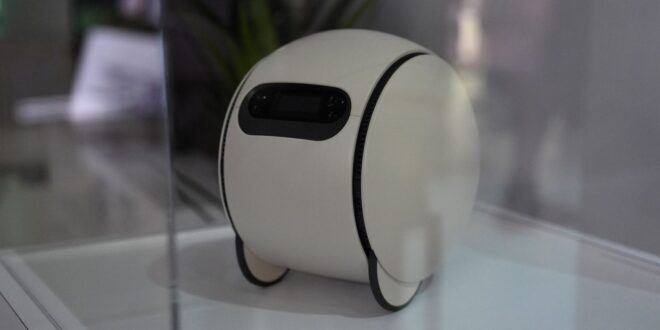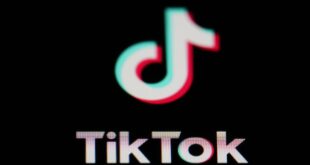Featuring a staggering lineup of more than 4,000 exhibitors, including 1,200 innovative startups, the CES (Consumer Electronics Show) held in Las Vegas, United States, is where the future unfolds, with companies showcasing their cutting-edge offerings.
This year, the spotlight continues to be on artificial intelligence (AI), with companies – and even carmakers – jumping aboard the AI train.
Attendees walk under a CES sign during CES 2024 at the Las Vegas Convention Center on Jan 10, 2024 in Las Vegas, Nevada. — AFP
Volkswagen, the German car manufacturer, is incorporating OpenAI’s ChatGPT into its vehicles to augment the in-car voice assistant.
This will enable drivers to perform tasks like adjusting the air conditioning, asking general questions, and getting information about the vehicle hands-free using voice commands.
It will be introduced to the Tiguan, Passat and Golf, along with the company’s ID line of electric vehicles and is expected to be available in Europe first before a possible launch in the United States.
BMW is also looking to integrate an AI-powered assistant into its vehicles and has opted to build it using Amazon’s Alexa large language model.
Even companies not traditionally associated with cars, such as graphics card giant Nvidia and chipmaker Intel, allocated a substantial part of their presentations to AI products for the vehicle market.
At this year’s CES, the world’s largest tech tradeshow, the spotlight is on how artificial intelligence is seamlessly weaving into consumer products, unveiling a new era of innovation. — AFP
Nvidia unveiled collaborations with various automakers to integrate its centralised car computers, namely the Drive Thor and Drive Orin, to offer self-driving capabilities in vehicles.
Partnerships have been forged with brands such as Mercedes-Benz, Polestar, Kodiak, and Pebble, with production slated to commence by the end of 2024.
Intel’s hardware, on the other hand, is expected to be integrated into vehicles from Zeekr, a Geely-owned carmaker that primarily serves the EV market, by the end of the year.
Its technology is expected to offer better energy management for EVs and include camera-based monitoring systems to ensure the safety of both drivers and passengers.
Gadget goodness
Undoubtedly, AI integrations are extending beyond the roads and will find their way into the hands of users everywhere.
At CES, a new competitor to the Humane AI Pin – a device that attaches to clothing and becomes an AI-powered personal assistant – emerged in the form of startup Rabbit with its R1 gadget.
The R1 is positioned as a universal solution for interacting with any digital service through voice commands, making services more accessible. — rabbit2
The R1 is positioned as a universal solution for interacting with any digital service through voice commands, making services more accessible.
However, the real challenge lies in its ability to seamlessly manage tasks of various natures; for instance, paying bills on banking apps and changing tracks on Spotify require different steps.
To accomplish these tasks, the device, which has a 2.88in touchscreen, a combination scroll wheel button, 4GB RAM, 128GB storage and a camera for machine vision, comes with pre-trained actions for various jobs.
If it encounters an unfamiliar task, users will be required to “teach” the device the specific steps that are needed to get the job done.
The R1 is going for pre-order for US$199 (RM920).
The AX Visio boasts a 13-megapixel camera. — Swarovski
CES also saw the debut of Swarovski’s (the binoculars company, not the jeweller) new smart binoculars, the AX Visio.
The smart binoculars have a 13-megapixel camera and, more importantly, an AI system capable of identifying over 9,000 species of birds and other animals for nature observers in the field.
According to the company, when the binoculars capture images, the identification of the specific species of animal photographed will be included in the metadata, and the images can be transferred to other devices, like a smartphone, via Bluetooth.
The Android-powered binoculars can capture videos in HD at 60fps (frames per second), which can also be live streamed through the Swarovski outdoor app.
However, it only includes a meagre 28GB of non-expandable storage.
The AX Visio is expected to launch next month with a price tag of US$4,799 (RM22,270).
Jonathan Gabrio, Head of Connected Experience Center at Samsung Electronics America, speaks about the Ballie robot ball during a Samsung press conference ahead of the CES tech show on Jan 8, 2024, in Las Vegas. — AP
Electronics giant Samsung was also quick on the ball with a product called Ballie, unsurprisingly with a shape to match and somewhat reminiscent of the Mister Handy robots from the Fallout video game series.
In a video, Samsung showcased Ballie’s capabilities, including sending updates on home activities to users, feeding and monitoring pets, controlling Internet of Things (IoT) devices, functioning as a projector, taking calls, and even offering live translations for video calls.
Samsung first introduced Ballie at CES 2020, and its return this year features an updated design language and feature set, though the company still hasn’t announced a specific release date for it.
The Nimble employs AI to assess fingernail size, shape, and curvature before utilising a robotic arm to apply the nail polish smoothly and accurately. — Nimble Beauty
Then there’s the AI-powered manicure station from Nimble Beauty, which simplifies fingernail painting. It starts by scanning a user’s nails to gauge their size, shape, and curvature. Then, a robotic arm applies the nail polish smoothly and accurately, fully automating the manicure.
The Nimble manicure machine is priced at US$599 (RM2,785) and will be available on March 15.
Meanwhile, the Oclean X Ultra toothbrush stands out in the world of unusual gadgets with its AI-driven real-time brushing tips, which are conveyed to the user through bone conduction, allowing them to receive oral care advice as they brush.
Adding to its unique features, this toothbrush also boasts WiFi connectivity.
 BeritaKini.biz Berita Viral Terkini di Malaysia
BeritaKini.biz Berita Viral Terkini di Malaysia





